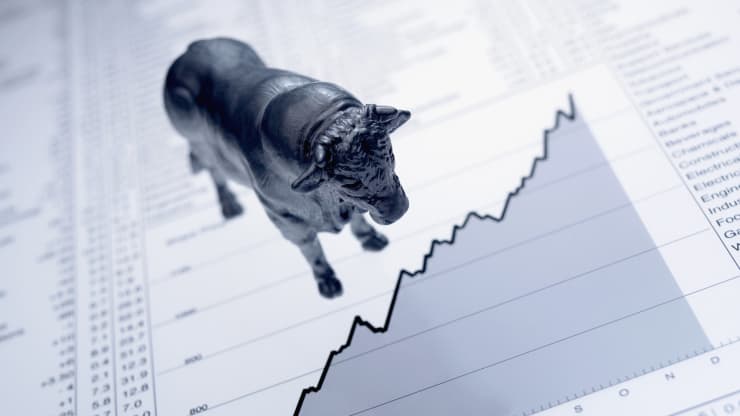
It’s likely you’ve heard the term “bear market” and “bull market” being used as context to what’s happening in the stock market.
In short, a bear market is when stock prices fall and a bull market is when prices go up. It’s easy to interpret the two terms as they are essentially opposites of one another. During a bear market, which is a steep drop in stock prices, you’ll typically also see low investor confidence and a perception that the market is risky. In a bull market, which is a continued rise in stock prices, you’ll likely see high investor confidence and a perception that there’s a strong economic environment.
More specifically, however, a bear market describes any stock index or individual stock that drops 20% or more from its recent highs. A bull market, on the other hand, typically rises 20% from recent bear market lows and reaches record benchmark highs.
How to invest during a bear vs. bull market
You can see how, as an investor, understanding these two scenarios is key to determining what to do with your money.
Investors in a bear market are tempted to sell off their investments during this time to eliminate the risk of losing even more money. On the other hand, investors in a bull market may sell some of their stock for a decent profit or hold on in hopes of prices rising even more in the future.
Regardless, while it’s easy to get caught up what’s happening in the market, experts generally suggest leaving your investments alone for the long haul. To avoid reacting to market fluctuations, refrain from looking at your portfolio often. It’s a natural instinct to want to immediately respond to a loss in value, so skirt around that knee-jerk reaction by checking up on your investments as little as possible.
Using a robo-advisor is an easy and affordable way to be hands-off with your investing approach. The best robo-advisors like Betterment and Wealthfront offer low-cost diversification and will automatically adjust your investments regularly, also known as rebalancing, so you can rest assured your portfolio is being taken care of.
Bottom line
Understanding that a bull market signals rising stock prices and a strong economy, while a bear market signals falling stock prices and possibly a weak economy is crucial to any type of investor. It’s easier to feel confident about your investments during a bull market, but remember that staying the course is usually the best thing you can do with your money when a bear market occurs.


























